Last week, we finished our yearly report on “The Saga of young Joe,” a vibrant 25-year-old who lost his life in an alcohol related single car accident in his ’69 Mustang Cobra Jet 428.
This week, we follow up with how Joe also became a statistic in the National Highway Safety Administration (NHTSA) new group of fatalities and crashes filed under “distracted driving.” Because Joe was answering his smart phone when he “missed” making a sharp curve at high speed, he adds another name to a category of accidents that has grown to over 20-percent of all accidents reported, both fatal and non-fatal.
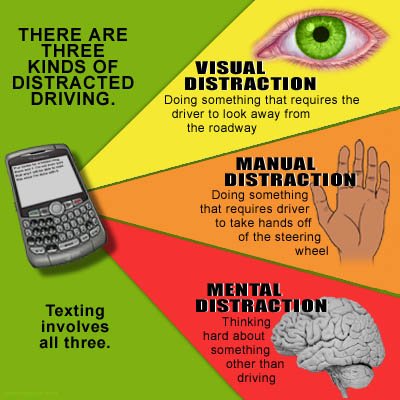
Sadly, these numbers are rising as the youth demographic, already addicted to cell phones and texting, receive their driver licenses each year.
The NHTSA’s “distraction-affected crashes” data is very troubling. The organization lists “distracted driving” as any driver that texts, uses a cell or smart phone or eats and drinks while driving. Other forms of distraction include excessive talking to passengers, grooming oneself, or even adjusting car stereo systems.
However, NHTSA stresses that sending and receiving text messages requires visual, manual, and cognitive attention, and is by far the most alarming distraction drivers engage in on a regular basis.
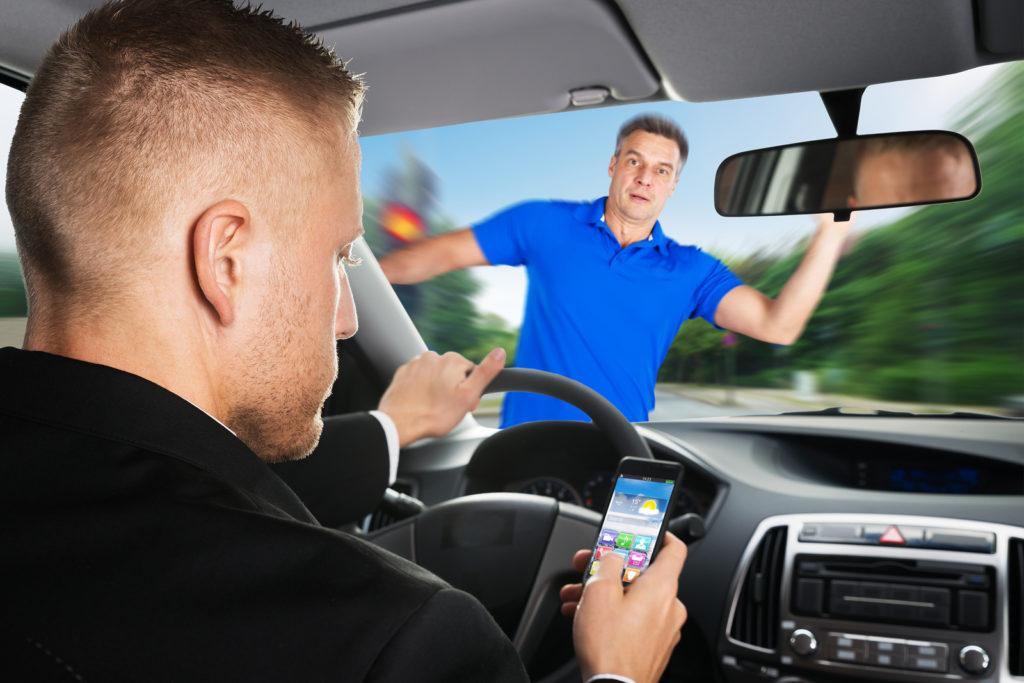
Further, NHTSA says that an estimated 71-percent of teens and young people say they have composed/sent SMS messages while driving and 78 percent of teens and young adults say they have read messages while driving. Every driver on the road today surely encounters fellow drivers texting and weaving on the road while driving.
It is also important to accept that texting is here to stay as people communicate via these modern multi-task cell phones. Currently, Distraction.gov estimates that every month some 170-billion text messages are sent in the U.S., Guam and Puerto Rico, and the Territories. This figure is expected to rise.
According to NHTSA, more than 400,000 people were injured in motor vehicle crashes involving distracted drivers in 2017, which is a nine-percent increase from the estimated 387,000 people injured the prior year. As sobering as these numbers are, expect the numbers to go higher when the 2018 numbers are released as more and more young drivers join the driver database.
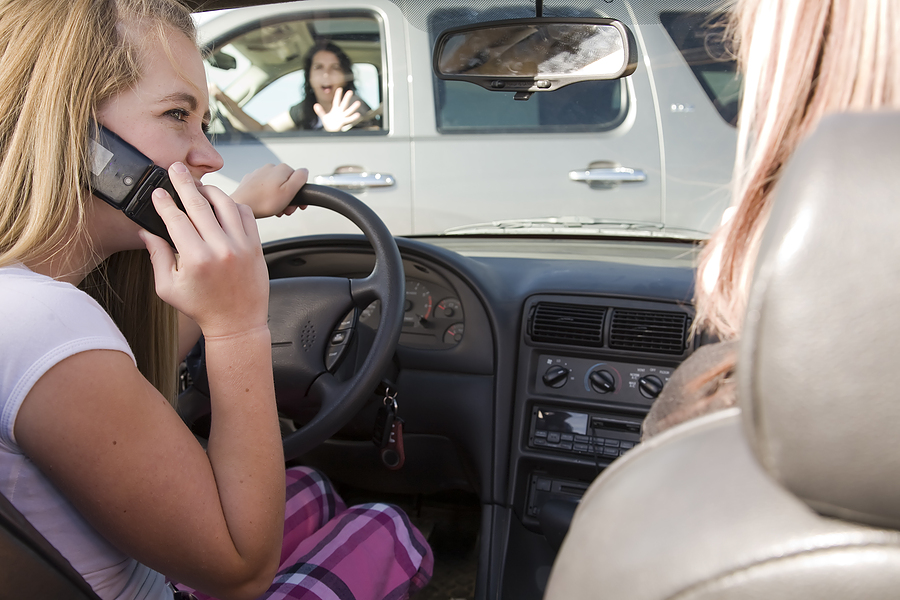
Additionally, NHTSA information indicates that driver distraction continues to be a significant problem given the difficulty of proof and a driver’s reluctance to admit texting / phone distractions, lack of witnesses, or death of the driver. NHTSA believes the actual number of distracted crashes could be much higher than the estimated 400,000-plus injured in distraction-affected crashes the last few years.
The U.S. Department of Transportation is also leading the effort to stop texting and cell phone use behind the wheel. Starting in 2009, numerous national distracted driving summits have and are being held resulting in the ban of texting and cell phone use for commercial drivers.
According to the NHTSA, the age group that produces the highest number of distracted drivers is, not surprisingly, the under-20 age group where 16 percent of all drivers younger than 20 involved in fatal crashes were reported to have been distracted. Of those drivers involved in fatal crashes who were reportedly distracted, the 30- to 39-year-olds had the highest proportion of cell phone involvement.
Here are more disturbing facts about distracting driving:
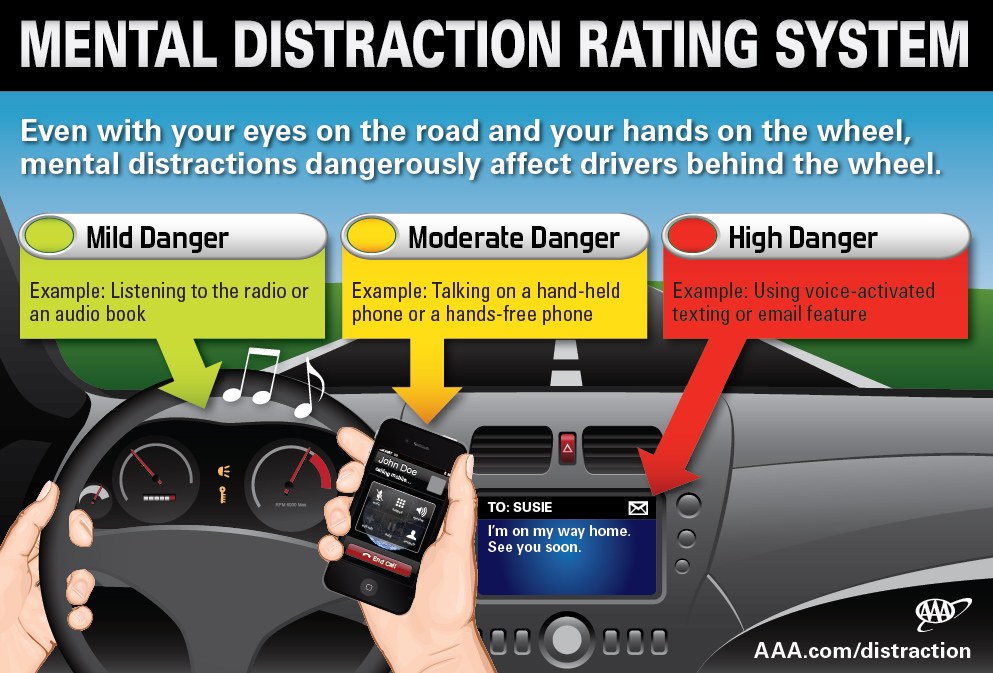
1. Five seconds is the average time your eyes are off the road while texting. When traveling at 55mph, that’s enough time to cover the length of a football field blindfolded. (VTTI)
2. Ten percent of all drivers 15 to 19 years old involved in fatal crashes were reported as distracted at the time of the crashes. This age group has the largest proportion of drivers distracted at the time of the crash. (NHTSA)
3. At any given daylight moment across America, approximately 660,000 drivers are using cell phones or manipulating electronic devices while driving, a number that has held steady since 2010. Experts feel this number will rise. (NOPUS)
4. More than half (53 percent) of all adult cell phone owners have been on the giving or receiving end of a distracted walking encounter, IE: person hit while trying to cross a street. (PEW Research)
5. Drivers in their 20s make up 28 percent of the distracted drivers in fatal crashes. Experts feel this number will rise. (NHTSA) (See www.distraction.gov for more stats by these organizations).
In summary, texting while driving has become just as serious as driving while intoxicated. More and more campaigns, starting in grade school, should be implemented to help curb this obsession. Educators are urged to contact the NHTSA as campaigns and videos are available to address the problem before students receive their driver permits.
Further, this writer again calls on all auto manufacturers to eliminate options that can take driver’s eyes off the road, like touch screen video/stereo displays and cumbersome to operate climate and navigation systems.
Drive safely and have a very happy New Year. Thanks to the NHTSA and Distraction.gov for important statistics and estimates for this yearly holiday season column.
(Greg Zyla is a syndicated auto columnist who welcomes reader input at 303 Roosevelt St., Sayre, Pa. 18840 or email at greg@gregzyla.com)

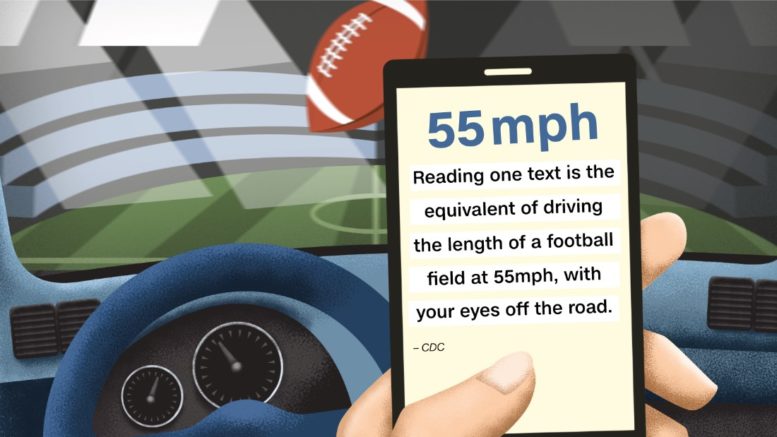

Be the first to comment on "Collector Car Corner – The Saga of young Joe, part 2: Distracted driving"